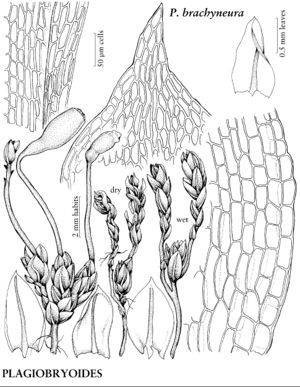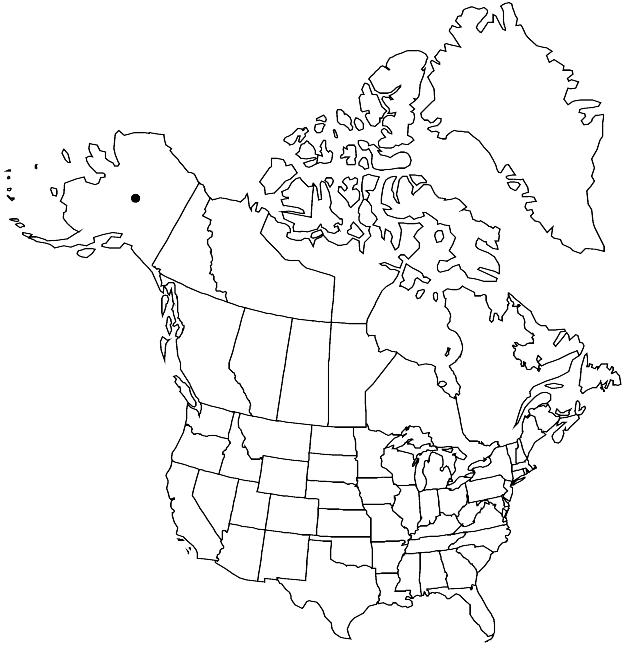Plagiobryoides brachyneura
Phytologia 91: 499. 2009.
Plants green or yellow-green. Stems 0.5–2 cm, not julaceous, innovations many; rhizoids many on proximal stem. Leaves crowded, somewhat contorted when dry, erect to erect-spreading when moist, narrowly to broadly ovate, flat or weakly concave, 0.5–2(–3.5) mm; base not decurrent, red; margins plane or recurved proximally, 1-stratose, limbidium variable, absent on younger leaves to present on older leaves; apex broadly acute; costa not reaching apex to very short-excurrent; proximal laminal cells rectangular, (50–)60–80 × 18–28 µm, 3–5:1, sometimes bulging, walls thin; distal cells irregular, 35–50 × 18–25 µm, 1–3:1, walls incrassate. Specialized asexual reproduction absent. Sexual condition synoicous. Seta thick, (0.5–)1–1.5 cm, flexuose to sometimes geniculate. Capsule inclined to nutant, 2–4 mm; hypophysis strongly differentiated, elongate; operculum apiculate; peristome reduced; exostome pale yellow or tan proximally, teeth blunt to lanceolate, irregular, often short; endostome hyaline to pale yellow, adherent to exostome, segments absent or occasionally a few present, cilia absent. Spores 18–22 µm, papillose, dark yellow-brown.
Phenology: Capsules mature Jul–Aug.
Habitat: Damp to seepy rock faces, crevices
Elevation: low elevations (0-100 m)
Discussion
Plagiobryoides brachyneura is very distinctive, with elongate-necked capsules, very short twisted setae, and short broad distal laminal cells. A. L. Andrews (1935) suggested that P. brachyneura is similar to species of Plagiobryum. The combination of gametophyte and sporophyte characters indicates a relationship with P. cellularis and its allies, thus the species is here transferred to Plagiobryoides. The species should be sought elsewhere in the Bering Sea region, especially in the Aleutian Islands and Siberia; it is known from Saint George, Saint Paul, and Agattu islands.
of conservation concern
Selected References
None.

